Emergency Preparedness in America—Are Homes Safe Enough in 2025?
Key Research Findings
- Only 54% of U.S. households have made emergency preparations in the past 12 months.
- 44% of Americans are more concerned about natural disasters and emergencies today than one year ago.
- 52% of respondents said the cost of supplies is a key reason they are not fully prepared for emergencies
- Just 5% of homes report having a fully stocked emergency supply kit, and 20% have none of the recommended supplies.
- 41% now rely on social media for preparedness tips and guidance, while 40% turn to information from the Federal Emergency Management Agency (FEMA) or Ready.gov.
- Only 26% of Americans feel “very” or “extremely” confident they know what to do in a major disaster.
The U.S. experienced 27 billion-dollar natural disasters in 2024, including hurricanes, tornadoes, wildfires, and flooding. This year has already seen California ablaze and Texas swept underwater, with an active hurricane season underway.
Are Americans prepared to keep their homes and families safe in case of natural disasters or emergencies?
SafeHome.org recently surveyed 1,200 adults across the United States to assess their emergency preparedness. We asked about their plans, pressing fears, confidence, readiness, and resources. Despite elevated anxiety, we found that most Americans have made little effort to prepare for natural disasters.
Americans Are Increasingly Concerned About Natural Disasters
According to our survey of 1,200 Americans, 44 percent are more concerned today about emergencies and natural disasters than they were 12 months ago. Only seven percent were less concerned today than last year.
This spike in concern may be partially attributable to federal budget cuts, economic uncertainty, and questions of government competence. However, Mother Nature seems to be the primary motivator.
Almost two-thirds of respondents expect to experience extreme heat in the next year, with an equal number anticipating severe storms. More than half of the population is bracing for power outages, while significant numbers realistically fear floods, freezes, and fires.
Fears varied by geography. Severe storms loom more ominously in the East, South, and Midwest, where memories of hurricane Helene and tornado outbreaks have nearly 80 percent expecting more of the same. The South and East, with plentiful shorelines, also reported higher concerns about flooding.
In the more arid West, worries of wildfires and earthquakes were ten times greater than in the rest of the country. Midwesterners have higher concerns about very low temperatures and industrial mishaps (perhaps reinforced by incidents like the chemical train derailment in East Palestine, Ohio).
More surprising was how this heightened threat perception failed to motivate significant preparation. Despite elevated wariness and widespread expectation of crises, nearly one in three Americans have taken no action over the past 12 months to prepare for potential disasters.
Forty-seven percent of Americans shored up their emergency supplies in the last year: only one-in-five practiced household contingency plans, and one-in-ten coordinated crisis strategies with their neighbors.
This disconnect between fear and response may be rooted in psychological and logistical factors. For some, denialism or disaster fatigue may undermine the motivation to prepare. Others are deeply skeptical of expert advice or can't afford to follow it. With FEMA preparing to gut its preparedness budget, overcoming such attitudes and impediments will only grow more difficult.
To shine a light on Americans' most pressing emergency needs, our survey of 1,200 U.S. adults dug deeper into specific supply deficits and the obstacles preventing preparedness.
Most Americans' Emergency Kits Are Missing Critical Items
The first step towards better emergency preparedness is assembling a household survival kit. Generations ago, this might have meant little more than owning a spare box of candles. In today's urbanized, digitized, interconnected society relying on apps, deliveries, and fragile supply chains, essential needs have expanded. The Red Cross recommends having these basic supplies on hand at a minimum:
- Water: one gallon per person, per day (3-day supply for evacuation, 2-week supply for home)
- Food: non-perishable, easy-to-prepare items (3-day supply for evacuation, 2-week supply for home)
- Flashlight
- Battery-powered or hand-crank radio
- Extra batteries
- First aid kit
- Medications (7-day supply) and medical items
- Multi-purpose tool
- Sanitation and personal hygiene items
- Copies of personal documents (such as proof of address, deed/lease to home, passports, birth certificates, insurance policies)
- Cell phone with chargers
- Family and emergency contact information
- Extra cash
- Emergency blanket
- Map of the area
Beyond non-perishable food, potable water, and basic first-aid material, Ready.gov suggests that Americans set aside a change of clothes, matches in a waterproof container, a whistle to call to rescuers, dust masks, plastic sheeting, and a fire extinguisher (among other useful items) in their emergency kits.
Based on these guidelines, only five percent of respondents believe their emergency kits are complete. One in five people admitted having zero provisions on hand.
American households were more likely to have some supplies on hand than others: Most people had flashlights (58 percent) and first-aid kits (51 percent), as well as three-day supplies of pet food (59 percent) and personal meds (58 percent), but lacked other critical necessities. Barely one in three have adequate stores of drinking water (37 percent), and even fewer possess sufficient cash (30 percent) or waterproof matches (22 percent).
Fewer than one-in-five homes (19 percent) feature a backup power source. This amenity may become necessary as increasing demands on outdated grids make blackouts and brownouts more frequent.
Unfortunately, big-ticket items like gas generators and solar power banks remain unobtainable for many families. Indeed, we found that affordability is the primary factor limiting Americans' emergency preparedness.
More than half of respondents cited costs as an obstacle preventing fuller preparation. More than 20 percent admitted being underprepared because they didn’t know what to purchase. Others blamed physical limitations, time constraints, indifference, or doubts about preparation efficacy.
Lower-income households, especially those headed by young adults and seniors, were most likely to blame cost for inadequate preparation, reinforcing the injustice of wealth inequality. Painful inflation (including a 17 percent jump in food prices) has added to the burden, with trade wars and tariffs threatening to elevate prices further.
Fortunately, there are ways to save money on basic supplies.
Buying batteries, hygiene items, non-perishables, and drinking water in bulk at warehouse chains builds stockpiles at affordable prices. Dollar stores are useful for cheaper gadgets, first-aid kits, and off-brand canned food (be sure to have a manual can opener). Thrift shops may also feature second-hand essentials at discount prices. Amassing provisions gradually over time also makes sense for many, not only as a method for deferring costs, but to more evenly distribute expiration dates. Additionally, some retailers pre-bundle supply kits to save money and time, and some government programs, aid agencies, or food banks provide assistance or discounted kits.
Overexposed and Underinsured: Gaps in Insurance Coverage
The primary concern in any emergency is escaping unscathed with loved ones, but it's also critical to plan for financial recovery once the danger has passed. For most adults, that means purchasing, reviewing, and updating insurance coverage to reflect current needs and burgeoning threats. Unfortunately, securing protection has become increasingly challenging, leaving many households vulnerable.
As storms and fires have become more frequent and costly, disaster insurance has become prohibitively expensive, or even unavailable outside insurers of last resort. After disbursing more than $110B in disaster claims in 2024, American insurers have reduced homeowner payouts, dropped riskier policies, and raised premiums by 24 percent.
These tight market conditions may make it more challenging to review and revise active policies annually, in accordance with expert guidelines. Accordingly, not many households have recently reassessed their coverage. Fewer than 40 percent addressed their insurance status during the past 12 months.
Barely a quarter of adults reviewed their disaster coverage during the last year, with only 10 percent choosing to increase coverage and six percent expanding their policies. Worse yet, numerous respondents felt compelled to reduce coverage or let policies lapse to make ends meet.
Those who’d trimmed their insurance mentioned higher food prices, soaring property taxes, stagnant wages, and rising premiums as reasons for cutting coverage. Such decisions may seem necessary yet often prove short-sighted and incur greater long-term expense. Consulting a professional broker, hunting deals, or seeking government assistance are options to explore before abandoning coverage.
Survival kits, contingency plans, and disaster insurance are critical components for emergency preparedness. Unfortunately, many adults need help to understand the best approach. We wanted to know where most Americans were seeking advice in today’s fractured media environment.
Barely one quarter of adults reviewed their disaster coverage during the last year, with only 10 percent choosing to increase coverage and six percent expanding their policies. Worse yet, numerous respondents felt compelled to reduce coverage or let policies lapse to make ends meet.
Those who'd trimmed their insurance mentioned higher food prices, soaring property taxes, stagnant wages, and rising premiums as reasons for cutting coverage. Such decisions may seem necessary, yet they often prove short-sighted and incur greater long-term expenses. Before abandoning coverage, consider consulting a professional broker, hunting deals, or seeking government assistance.
Survival kits, contingency plans, and disaster insurance are critical components of emergency preparedness. Unfortunately, many adults need help understanding the best approach. We wanted to know where most Americans sought advice in today's fractured media environment.
FYI: Only 1 in 4 feel Americans feel very confident they know what to do in a major emergency.
Conclusion
America faces a choice as we grapple with near-record heat, intensifying storms, and growing infrastructure vulnerability. The country can continue on its current path—worried but unprepared, aware but inactive—or treat emergency preparedness as a critical skill for keeping our homes secure and families safe.
The SafeHome.org survey of 1,200 adults shows the foundation for change exists. Nearly half of Americans are more concerned about emergencies than a year ago, and most understand disasters will likely affect their communities. The challenge lies in converting that awareness into action before the next Hurricane Helene, heat dome, or grid failure tests our collective resilience.
Emergency preparedness isn't paranoid in a world where extreme weather is becoming ordinary—it's pragmatic. The question isn't whether disasters will strike American communities again in 2025, but whether those communities will be ready when they do.
Methodology
This study used a cross-sectional, self-administered online survey to assess the opinions and behaviors of U.S. adults with respect to disaster and emergency preparedness. The target population comprised non-institutionalized residents of the United States aged 18 years and older. Items included a variety of closed-ended formats—such as single- and multiple-response options, Likert-type scales, semantic differentials, and ranking questions—as well as open-ended prompts to capture qualitative insights.
A total of 1,200 completed, eligible responses were obtained. Participants were recruited through a reputable national online research platform with demonstrated capacity to deliver diverse, census-matched samples. Eligibility required being at least 18 years old, residing in the United States, providing informed consent, and completing the full questionnaire. To enhance representativeness, quotas were applied during fielding for key demographics (sex, age group, state, and region) to align the sample with current U.S. Census American Community Survey benchmarks for age, sex, and race/ethnicity, as well as ensuring a wide geographic spread covering all 50 states and D.C. Data collection occurred on July 21, 2025, via an online survey accessible on desktop and mobile devices.
The unweighted sample was 51% female, 48% male, and 1% nonbinary/other, with a mean age of 46.1 years (median = 46, range = 18–89). Respondents resided in all 50 states and D.C. and represented a broad socioeconomic spectrum: 22% reported annual household incomes below $35,000, 34% between $35,000 and $74,999, 25% between $75,000 and $124,999, and 19% at $125,000 or higher.
Quality assurance procedures included IP and geolocation verification to confirm U.S. residency, duplicate detection via digital fingerprinting, and exclusion of bots or fraudulent entries. Respondents who failed attention checks, completed the survey in unrealistically short times (defined as less than one-third of the median), or displayed patterned responding (e.g., straight-lining) were removed. Only complete questionnaires from eligible respondents were analyzed, and open-ended responses were screened for nonsensical content.
At the 95% confidence level, the overall margin of sampling error is ±2.8 percentage points for estimates near 50%, based on the sample size of 1,200 and assuming simple random sampling.

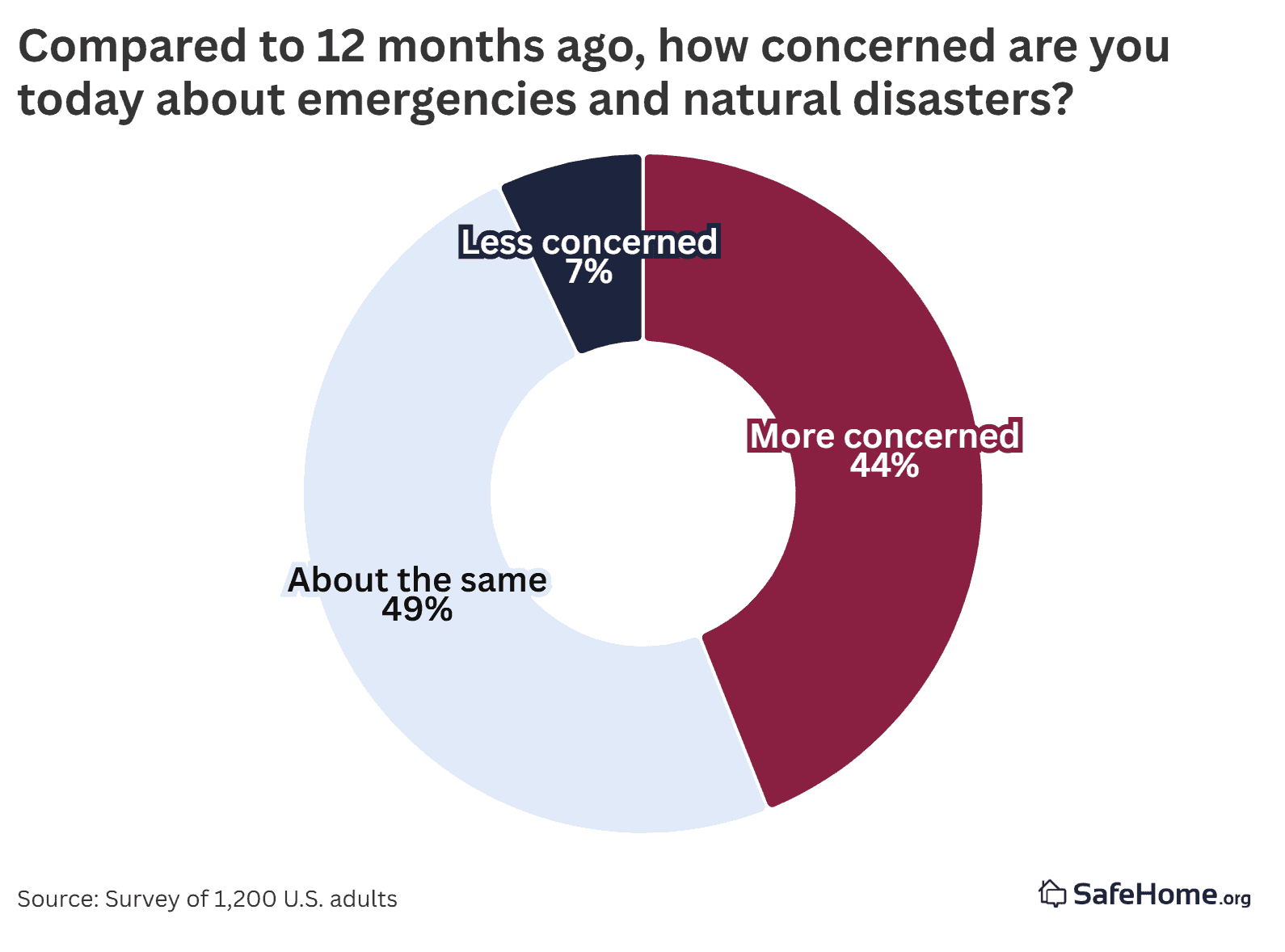
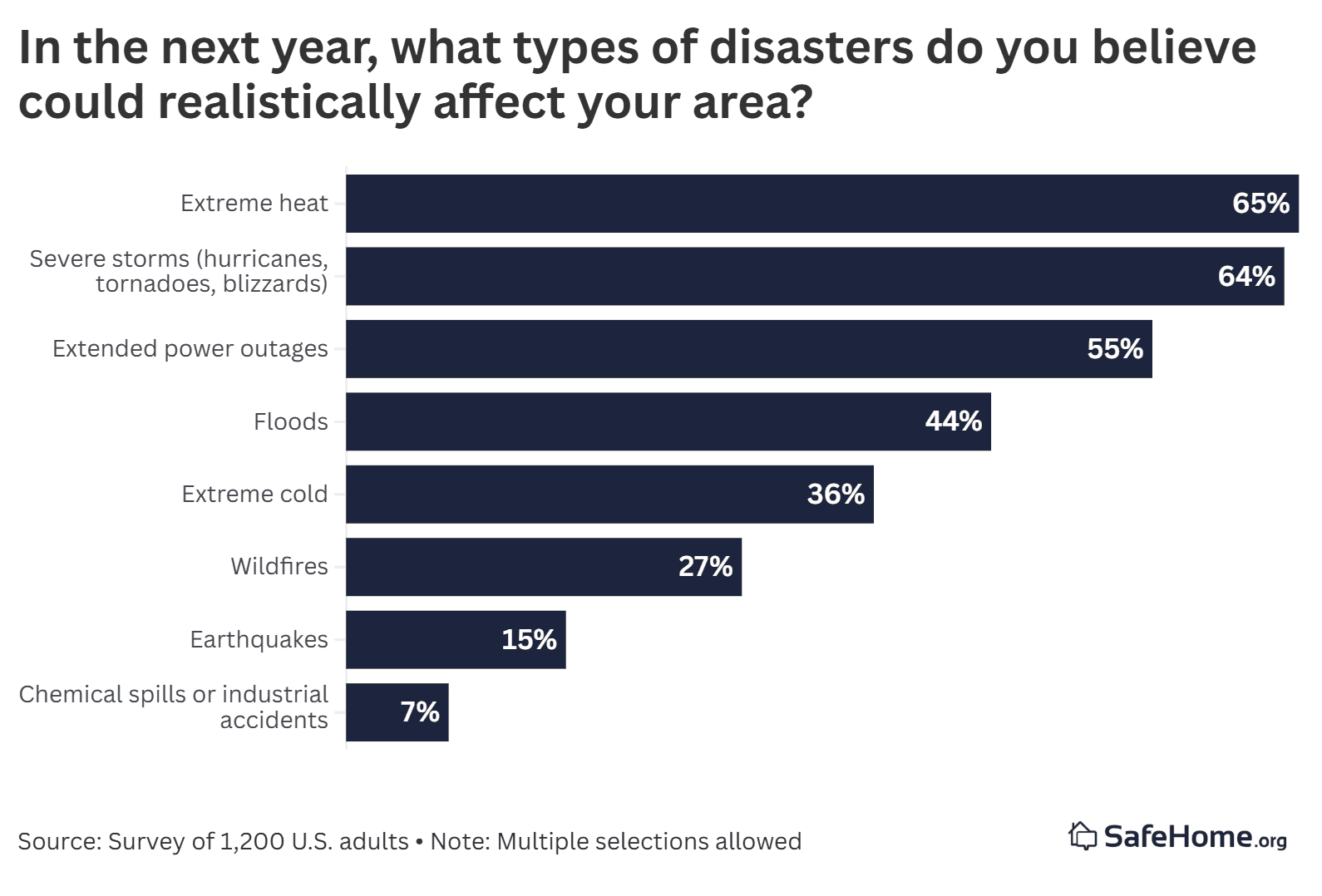
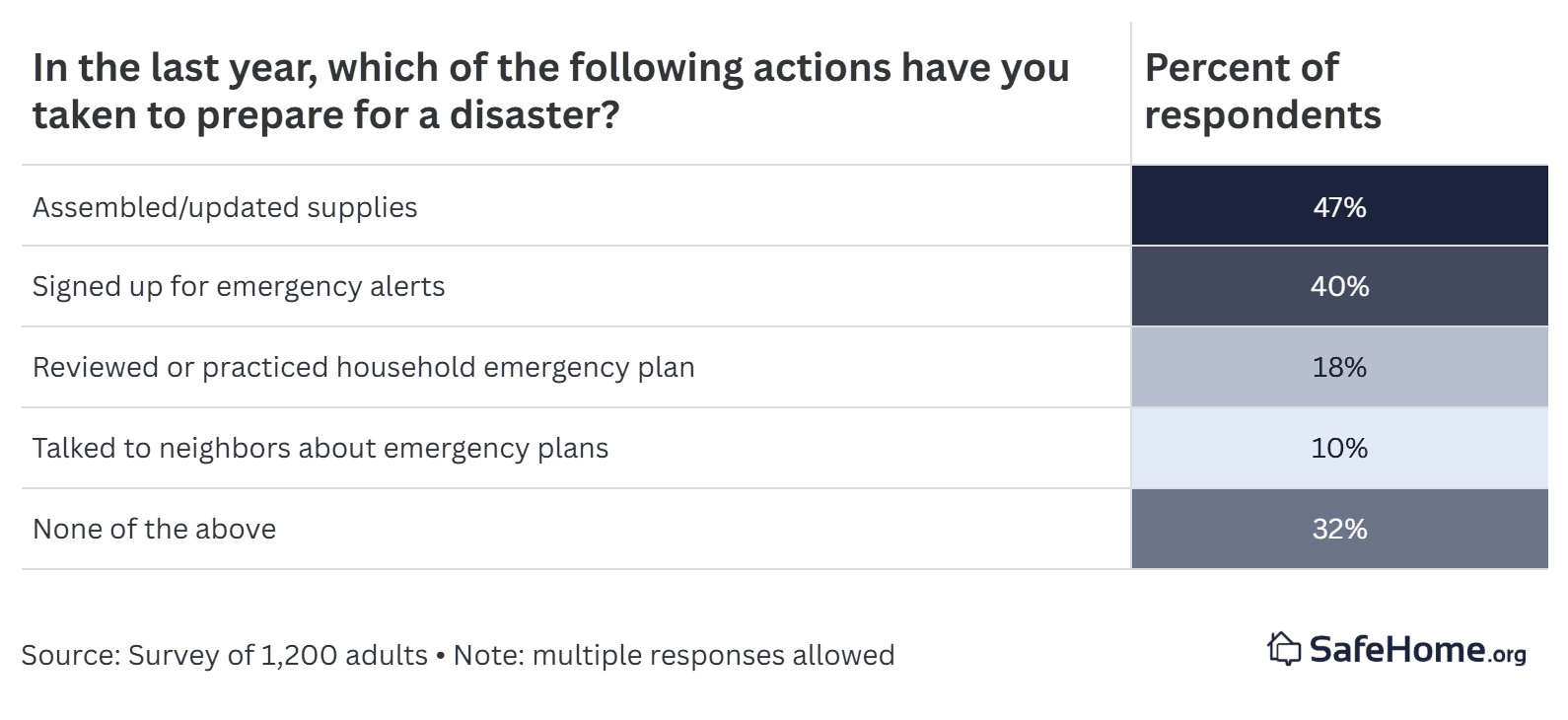
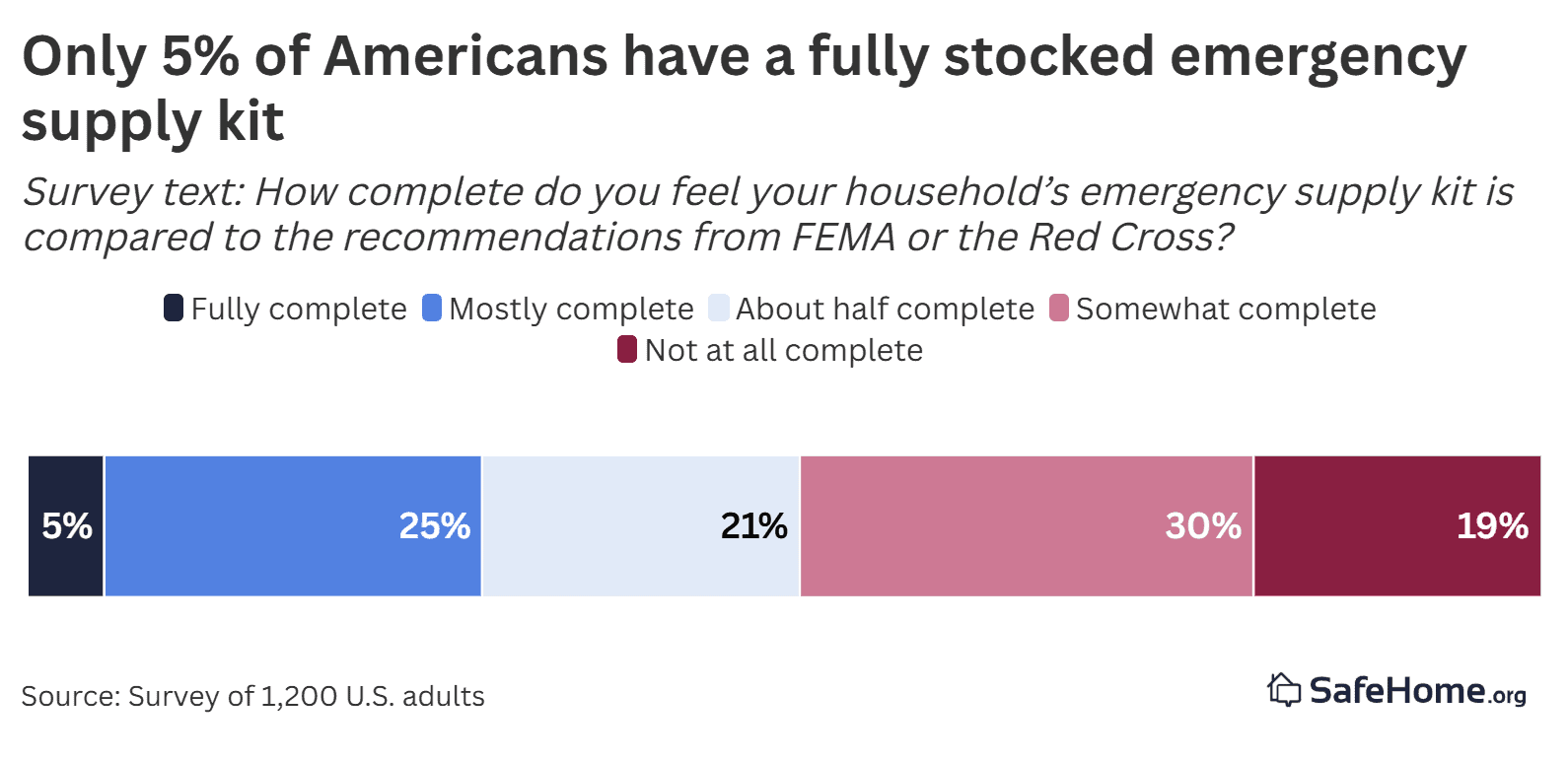
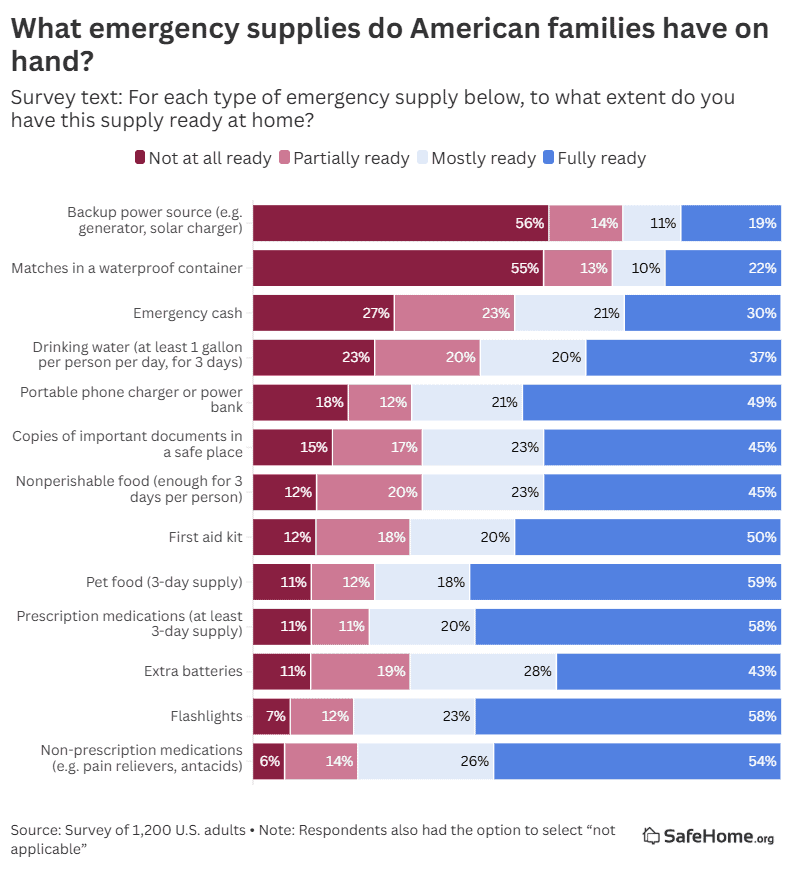
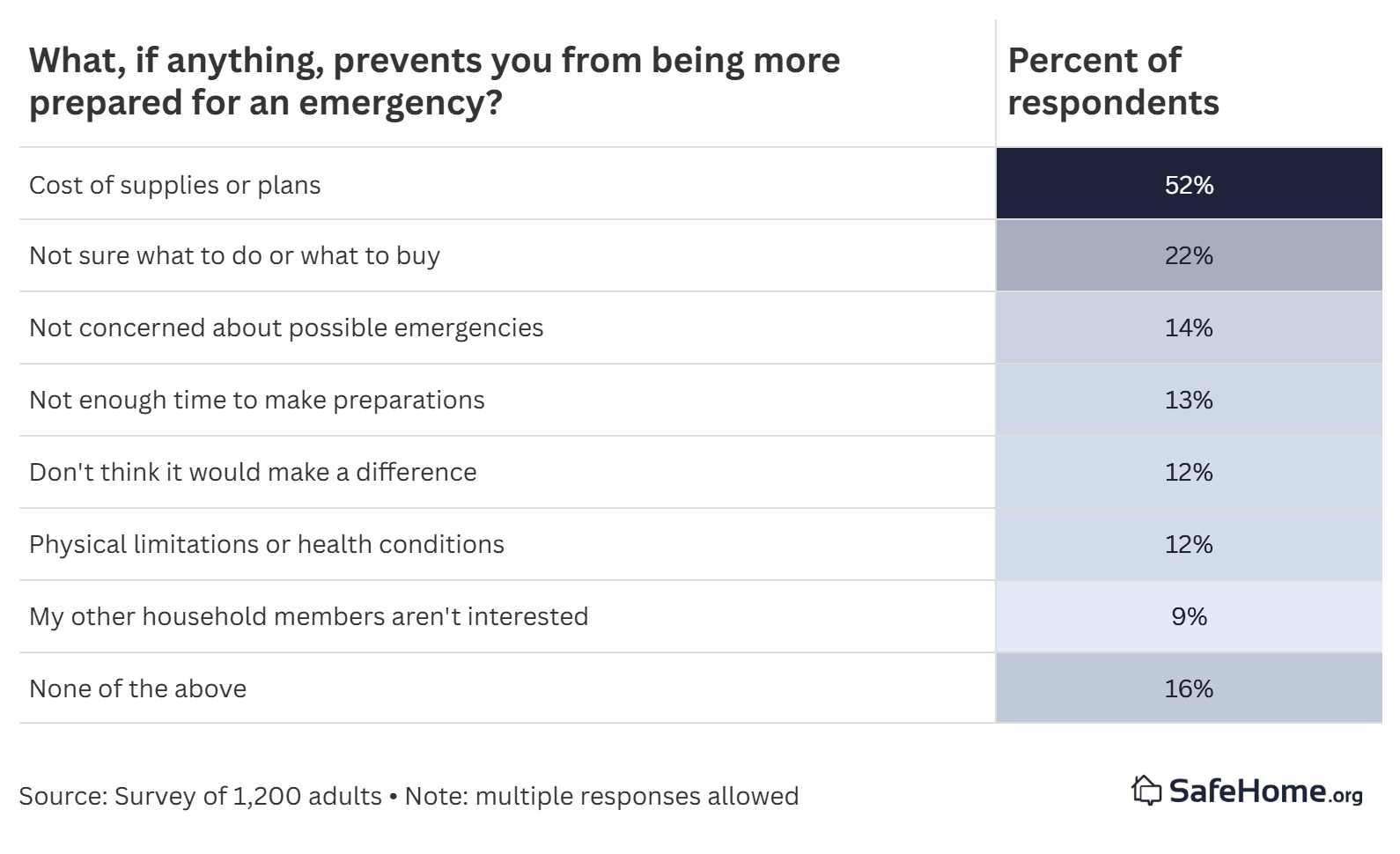
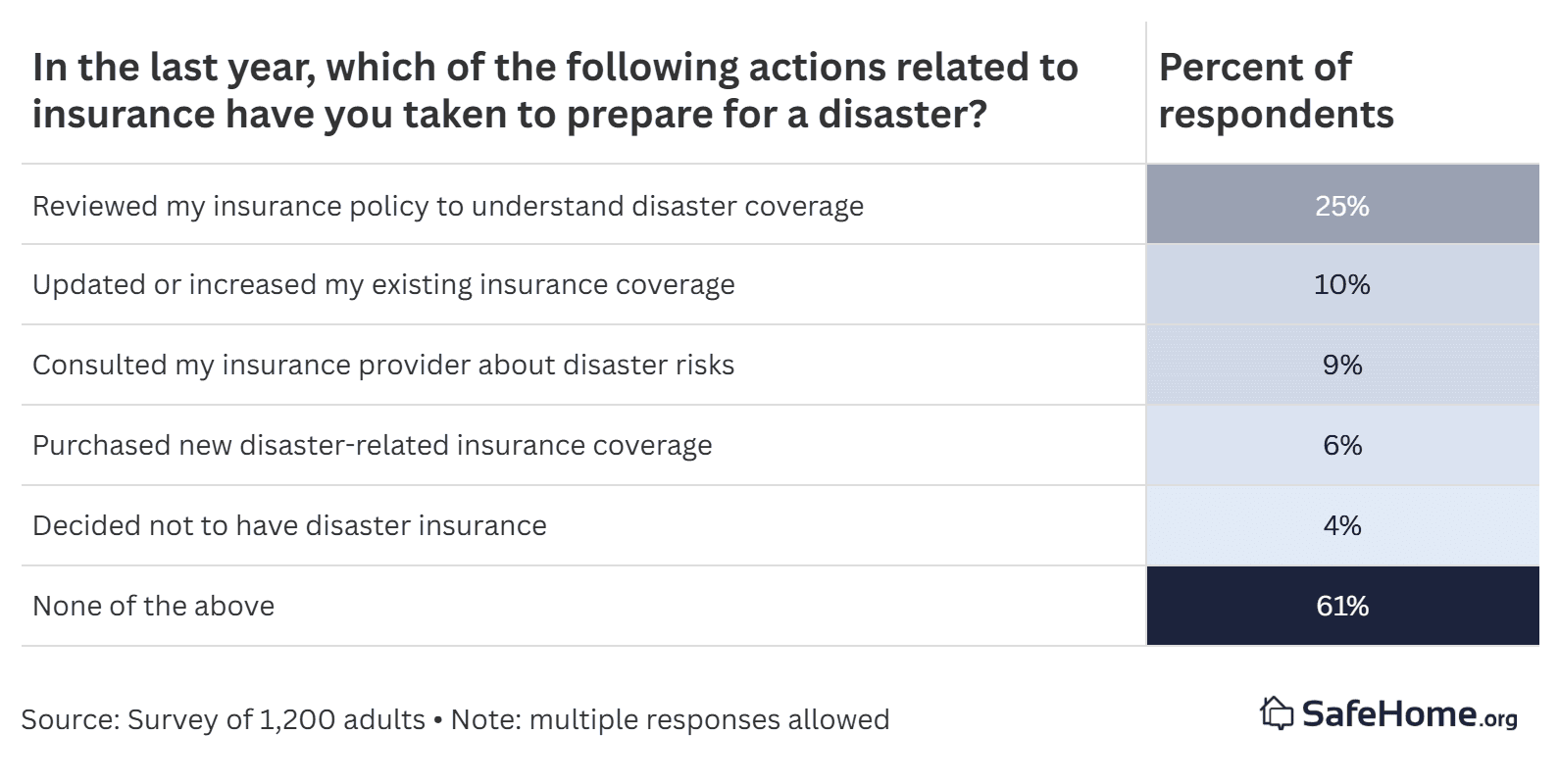
Social Media is a Key Source of Emergency Prep Information
About two-thirds of Americans say they're at least somewhat sure that they know what to do in an emergency, yet barely a quarter (26 percent) feel “very” or “extremely” confident in their knowledge. Where can the public turn for additional guidance on disaster preparation?
In recent years, seismic changes have occurred in the nation's media landscape. Waning trust in legacy media and government institutions, coinciding with social media's ascent, has reshaped our information ecosystem, diverting attention from mainstream outlets to a fractured array of personal sources and popular platforms.
Half of adults still receive emergency guidance from traditional news channels. More Americans rely on friends, family, and social media for advice than on official government sites.
That's not necessarily a negative development. Good information can come from anywhere, and social media's influence reaches many who don't follow conventional journalism. Thousands of videos posted on TikTok under the hashtag #PrepperTikTok have created a community and raised awareness by generating millions of views.
However, there's inherent danger in relying on a medium known to prize engagement over accuracy. To vet advice from social media accounts, viewers should continually assess credentials, verify information with additional research, and discern whether the guidance seems designed more to generate sales than to inform.
Potentially more problematic is the increasing number of people using social media and TikTok videos as a primary news source. For real-time emergency info, seeking verified primary sources like news gatherers, government agencies, or embedded NGOs is vital rather than relying on unqualified influencers. Thankfully, many legitimate outlets have launched their own social media accounts.